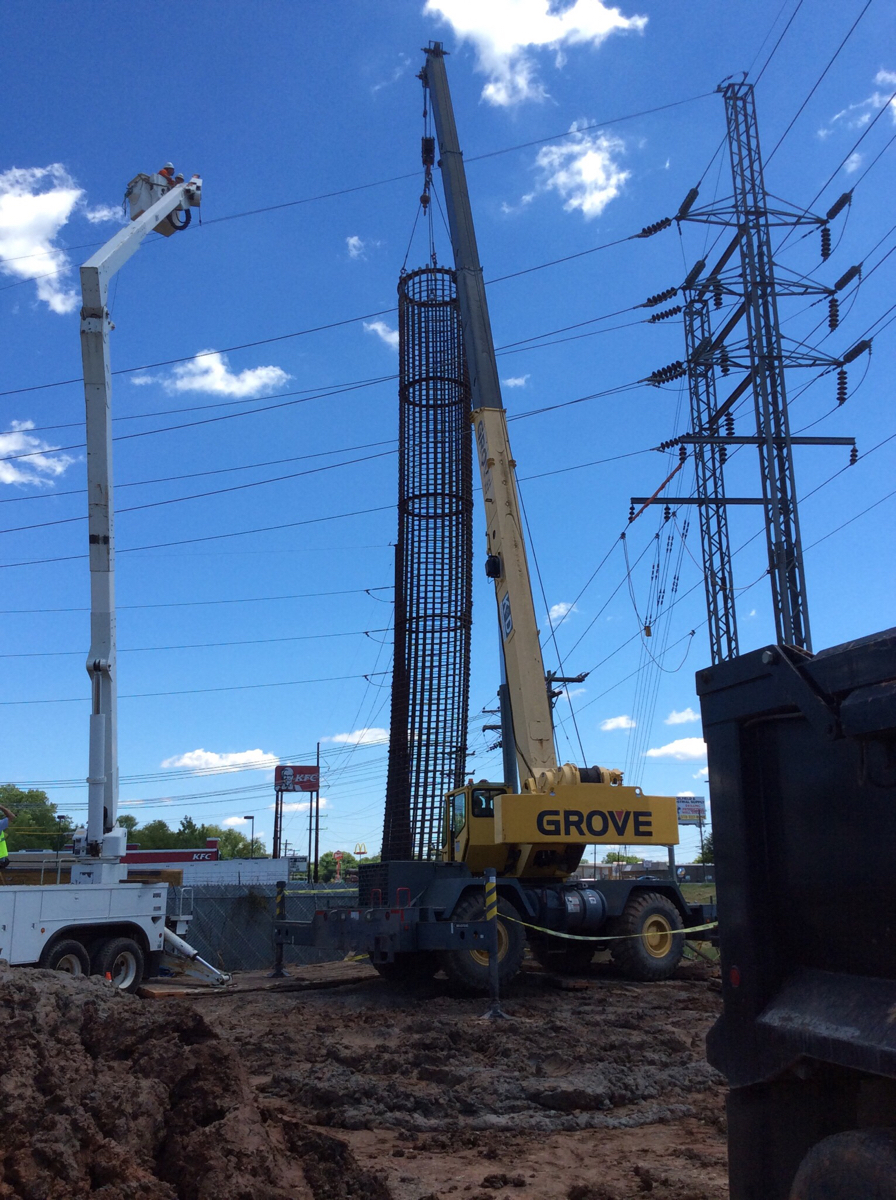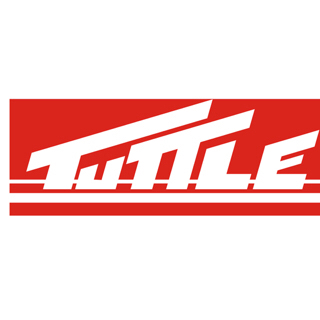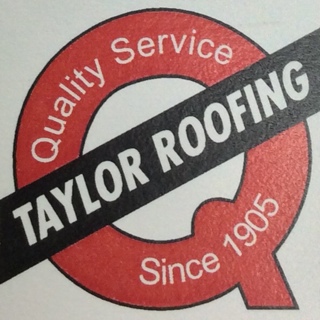Information
-
K&D Job number #
-
Scope of work to be completed by K&D Construction:
-
Location:
-
Conducted on
-
K&D Foreman Onsite
-
Audit Conducted By:
1. Planning
-
1.1. Have employees completed AEP Annual orientation and have hard hat stickers for Documentation?
-
1.2. Has site Supervision completed OSHA 30 hour training and all additional so completed OSHA 10 Hour training?
-
1.3 Are there at least 2 K&D employees trained in First Aid and CPR?
-
1.4 Is the PSSEP readily available and updated as needed?
-
1.5 Is there a documented emergency action plan on-site?
-
1.6 Has the Emergency Action Plan been reviewed by employees and route driven to the hospital?
-
1.7 Has the contractor performed a documented THA that list the step-by-step plan for the task, hazards associated with task and control measures to mitigate hazards?
-
1.8 Has the contractor conducted a THA review with all visitors and briefed them on scope of work and hazards in the work area?
-
1.9 Have all employees reviewed and signed the THA prior to work and immediately after lunch and/or significant break?
-
1.10 If task involve hot work or a confined space, has a permit been filled out?
-
1.11 Is the K&D Safety Manual readily available?
-
1.12 Are Safety Data Sheets (SDS/MSDS) readily available and employees aware of the technology or the location?
-
1.13 Is equipment inspected daily and in satisfactory condition?
-
1.14 Are adequate First Aid supplies including eye wash and blood borne pathogen kit available?
-
1.15 Is AED accessible and ready for use (ASI green light blinking)?
-
1.16 Do employees know location of AED?
-
1.16-B Has AED monthly inspection been performed
2. Human Element
-
2.1 Are employees using proper lifting techniques
-
2.2 Are employees taking routine breaks if task involves repetitive motion or great exertion
-
2.3 Are employees maintaining proper body positioning and keeping free from pinch points.
-
2.4 Are employees utilizing machinery or equipment for items that may be too heavy for manual lifting.
3. Material Handling & Motorized/Mechanical Equipment
-
3.1 Are operators properly trained and deemed competent/qualified to operate equipment?
-
3.2 Is equipment inspected daily and in satisfactory condition?
-
3.3 Are all safety devices functioning properly and in use as required? (Anti-two block, load limit charts, boom angle indicator, back up alarm, horn etc.)
-
3.4 Is equipment grounded and barricaded (i.e. swing radius, ground rod, drop zone, etc.) when in use?
-
3.4-B Are grounds in good condition with proper clamps tagged with test date not exceeding 2 years.
-
3.5 Is a designated spotter in place and safe work distance maintained to structures, equipment,and overhead hazards?
-
3.6 Is Minimum Approach Distance maintained around energized parts or lines?
-
3.7 Have employees completed a truck load/unloading checklist for all materials being loaded and unloaded where equipment or rigging is required to assist in moving the material?
-
3.8 Are loads properly secured?
-
3.9 Are pole handling guidelines Followed(i.e blocking and cribbing.)?
-
3.10 Are trucks and trailers chocked?
-
3.11 Is the weight of the load verified and equipment rated for the load?
-
3.12 Does crane have documented annual inspection? (performed by qualified person)
-
3.12-B. Does crane have documented monthly inspections (previous 3 months)?
-
3.12-C. Is crane visually inspected each shift before use?
-
3.12-D. Are tag lines in use and employees protected from overhead loads?
-
3.12-E. Is the crane set-up properly (i.e. wheels off ground, barricaded, grounded, outriggers fully extended, with proper cribbing/outrigger pads, stable ground)?
-
3.12-F Has pre-lift checklist been filled out?
-
3.13 Is the rigging equipment rated for the load, inspected prior to use, and protected from sharp edges?
-
3.14 Do all signalman/riggers have documented training?
4. Excavations
-
4.1 Have underground utilities been located and marked?
-
4.2 Has a competent person performed a documented inspection prior to entry for each shift and when conditions change? (Rain, thaw, etc.)
-
4.3 Is egress provided within 25' for excavation depths 4' or greater?
-
4.4 Are employees entering excavations/trenches 5' or greater protected from cave in? (Sloped, shored, or shielded)
-
4.5 Are spoils and equipment at least 2' from the edge of the excavation?
-
4.6 Are excavations barricaded and covered when left unattended?
-
4.7 Are open holes properly covered? (Covers capable of supporting 2 times the intended load, labeled, and secured to prevent displacement)
-
4.8 Are drilled excavations appropriately protected? (Barricades, fall protection, hole covers, hole watches, etc.)
-
4.9 Do employees have a rescue/retrieval plan in place?
-
4.10 Is drill rescue kits located on drill rig and secured (red breakaway seals)?
5. Hand and Power Tools
-
5.1 Are hand and power tools in good working condition and free of defects (Broken handles, cracked frames, damaged cords, etc.) with required safety guards in place?
-
5.2 Are employees using the right tool for the right job? (Meets mfg. intent)
-
5.3 Are pneumatic hose connections secured with cable restraint devices? (Whip checks)
-
5.4 Are extension cords in good condition and protected from traffic and damage?
-
5.5 Is the contractor utilizing and relying on personal GFCI for all cords?
6. Housekeeping
-
6.1 Is potable water and adequate toilet and wash facilities available?
-
6.2 Are form and scrap lumber with protruding nails and other debri kept clear from all work areas?
-
6.3 Is all protruding reinforced steel, onto and into which employees could fall, guarded to eliminate the hazard of impalement ( rebar caps)?
-
6.4 Are containers provided for collection of all refuse and waste disposed of at frequent intervals?
-
6.5 Is spill containment and/or spill kit available?
-
6.6 Are compressed gas cylinders properly stored? (Upright, secured, valve cap in place)
-
6.7 Are flammable liquids properly labeled and stored in approved containers?
-
6.8 Is fuels storage free of combustible materials with "No Smoking" signs conspicuously posted?
-
6.9 Is fire extinguisher within proper distance to flammable storage? (25' to 50')
-
6.10 Is a fire extinguisher available on all equipment?
-
6.11 Are all fire extinguishers charged and inspected?
-
6.12 Has contractor addressed potential slips/trips/falls? (Walk areas clear and free of ruts, snow/ice removal, etc.)
7. Ladders and Stairs
-
7.1 Are ladders or stairs being used?
-
7.2 Are stairways with 4 or more risers or rising more than 30" equipped with one handrail and 1 stair rail along each unprotected edge/side?
-
7.3 Are ladders inspected and in good condition and rating labels intact?
-
7.4 Is step ladder fully open and spreader lock engaged?
-
7.5 Is extension ladder setup properly? (4:1 pitch extended 3' over landing and secured to prevent displacement)
-
7.6 Is a ladder or stairs provided for access break exceeding 19"?
8. Live Line Tools
-
8.1 Are all insulated tools and PPE properly stored?
-
8.2 Are all insulated tools and PPE visually inspected prior to use and in good condition?
-
8.3 Are all insulated tools and materials stamped with current dielectric test dates? (Hot sticks-2yrs.,Rubber Gloves-6mo., Sleeves and Blankets-12mo.)
9. Personal Protective Equipment
-
9.1 Are all employees wearing at a minimum a hard hat, ANSI approved safety glasses w/side shields, safety toed shoes, and a high visibility reflective shirt/vest as the outer most layer?
-
9.2 Are employees working "on or near" energized lines and equipment wearing appropriate rated FR Clothing? (Minimum of 8cal/cm2 as the outermost layer)
-
9.3 Are employees wearing gloves appropriate for the hazard? ( Leather, cut resistant, insulated rubber, etc.
-
9.4 Are employees exposed to flying particles/chemical splash wearing a face shield? (Cad-welding, grinding, chainsaw, battery handling, etc.)
-
9.5 Are employees exposed to arc during welding activities wearing a welding hood?
-
9.6 Is contractor utilizing fall protection at appropriate height? (Harness, yo-yos, lanyard, fall limiters, guard rails, etc.)
-
9.6-B Are employees inspecting fall protection before use?
-
9.6-C Is anchor point capable of supporting at least 5,000 pounds per employee attached?
-
9.6-D Are all employees wearing appropriate fall protection when required?
-
9.6-E Are employees who might be subject to fall hazards trained in fall protection in order to minimize these hazards?
-
9.7 Is all protruding reinforced steel, onto and into which employees could fall, guarded to eliminate the hazard of impalement?
-
9.8 Is additional PPE in use as required? (Hearing protection, respirators, metatarsal protection, chaps, etc.)
10. Substation
-
10.1 Did the contractor report into dispatch?
-
10.2 Are all employees (including subcontractors) station entry trained or escorted?
-
10.3 Is substation gate closed and locked or under the observation of an attendant at all times?
-
10.4 Is substation construction signage posted for hazards? (Under construction, open excavations, etc.)
-
10.5 Has the contractor received documented approval for excavations and utilizing approved digging methods?
11. Wire Pulling
-
11.1 Is Wire Pulling Plan documented, readily available, and updated as needed?
-
11.2 Are radio communications in use and echo communication protocols being followed?
-
11.3 Are guard structures erected where needed and energized lines properly protected?
-
11.4 Is wire pulling/stringing/tensioning equipment barricaded, bonded, and grounded with EPZ mats in place?
-
11.5 Is equipment rigging inspected and rated for required pull and tension?
-
11.6 Is a 3:1 distance maintained to first and last structure?
-
11.7 Are there running grounds on both ends if needed and ground travelers at all hot crossings?
-
11.8 Is there a person assigned to follow swivel or sock thru structure?
-
11.9 Have required permits been obtained for any public road crossings?
12. Working On or Near Energized Equipment
-
12.1 Are all lines and equipment de-energized, tested, and grounded?
-
12.2 Is crew working within trigger distances to energized lines or equipment? ( 345>20ft 345<50ft)
-
12.3 Are employees maintaining minimum approach distances?
-
12.4 Did crew include trigger distances and MAD on JHA?
-
12.5 Are energized facilities covered or guarded to prevent contact?
-
12.6 Do the foreman and crew know and understand the clearance points?
-
12.7 Do the foreman and crew know who holds the clearance, non-recluse order (NRO) or hold order for the facilities being worked?
-
12.8 Have all sources of energy been considered including induced voltage?
-
12.9 Are all insulated tools and materials in good condition, stamped with current dielectric test dates, and properly stored? (Hot Sticks-2yrs, Rubber gloves-6months, Sleeves/blankets-12 months)
-
12.10 Are employees working "on or near" energized lines and equipment wearing appropriate arc rated FR clothing? (Minimum 8cal/cm2 as outermost layer)
13. Work Platforms (Aerial Lifts, Trucks, Crane Baskets, etc.)
-
13.1 Is crew using Aerial lifts, Bucket trucks, Crane baskets, etc?
-
13.2 Is equipment adequately grounded and maintaining safe work distances?
-
13.3 Is drop zone barricaded?
-
13.4 Is personal fall in use and secured to proper for anchorage points?
-
13.5 Does the operator have training and documented daily inspection?
-
13.6 Is equipment operated on a level surface loaded properly and within load capacity limits?
-
13.7 Is the gate or chain secured and nothing used to increased height? ( Working from floor of basket/platform)
-
13.8 Does equipment have current dielectric test?
-
13.9 Is Qualified Observer/Spotter utilized to ensure MAD is maintained for tight spaces or when operators view is obstructed?
-
13.10 Has a trial lift/proof test been performed prior to use of personnel platforms?
14. Work Zone Protection
-
14.1 Are workers properly protected from vehicle traffic? (Signs, cones, flagging operations, etc.)
-
14.2 Are overhead lines marked with signs? (36in X36in at appropriate height)
-
14.3 Does Contractor have a documented traffic control plan in place?
-
14.4 Are work areas and drop zones barricaded and maintained?
Comments and Suggestions
-
COMMENTS:
-
Signature of person receiving audit review:
-
Signature of person completing audit:













